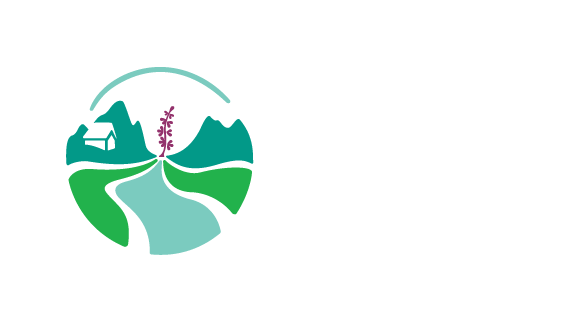You can download our more detailed FAQ sheet, or browse the headings below:
Why is Regional Planning done?
How is land use planning done in the Yukon?
What are the phases of regional planning?
How many planning regions are in the Yukon?
Can land use planning occur in a region without a land claim agreement?
How much authority does a land use plan have?
How can the public become involved in planning?
How do land use plans fit in with other plans (municipal, area plans, etc.)?
How is Land Use Planning related to the Development Assessment Process?
What is the Yukon Land Use Planning Council (YLUPC)?
Acronyms and Abbreviations
| YLUPC | Yukon Land Use Planning Council (the Council) |
| Commission | Regional Land Use Planning Commission |
| UFA | Umbrella Final Agreement |
| CYFN | Council for Yukon First Nations |
| Minister | Min. Energy, Mines and Resources |
| TT | Traditional Territory |
| DAP | Development Assessment Process |
| YESAB | Yukon Environmental and Socio-economic Assessment Board |
What is Land Use Planning?
The term land refers to all water, air, living organisms, natural resources and natural processes including surface and subsurface interests.
Land use is any activity that involves the land in any way. Some examples of land use in the Yukon are subsistence activities such as hunting, trapping, fishing and traditional uses; industrial activities such as construction, mining and energy production; and other human uses such as tourism, recreation, agriculture and communication. Land use can also refer to non-human uses. Protected areas such as parks and ecological reserves are also considered land uses. Balancing economic, social and environmental needs is a complex task, because land use varies widely.
Because land use varies widely, a complex task is to balance economic, social and environmental needs.
Land Use Planning is the tool often used to balance these needs. It is a value-based process that guides decision-making regarding the land, and attempts to consider the various land-based needs. Land Use Planning is the process of making educated judgements about how the land should be shared and used. These judgements are based on what we know about the land, and how we hope to relate to the land as humans. In other words, there are two important elements to Land Use Planning: understanding the land and its users and making decisions about how to manage that land.
The key characteristics of land use planning are that it is systematic and follows a predetermined process; it has aims and purposes that must be defined; it involves applying knowledge; it requires making choices among options for the use of land, water and resources; and it is the basis for making decisions.
Why is Regional Planning done?
Regional planning in the Yukon (under the Final Agreements):
- Minimizes actual or potential land use conflicts. These conflicts will likely grow worse without planning;
- Recognizes and promotes the cultural values of Yukon First Nations people. Certain cultural activities are intrinsically linked to the land;
- Ensures Sustainable Development by developing social, cultural, economic and environmental policies that apply to the management, protection and use of land, water and resources in an integrated and coordinated manner;
- Spells out how and where land uses may or may not occur, and so increase the land use certainty. In some cases, land use plans may help avoid legal action between different land users.
How is land use planning done in the Yukon?
The signing of the UFA, and the subsequent land-claims settlements, introduced a new process through Chapter 11, which specifies how regional planning shall be carried out in the Yukon. Land use plans are written by Regional Land Use Planning Commissions (or just Commissions). These are bodies appointed by the Minister of Energy, Mines and Resources, consisting of individuals nominated by the Yukon Government and the Yukon First Nation(s) whose traditional territory falls within the planning region. These individuals should be Yukon residents with long term familiarity with the region being planned.
Commission members are paid honoraria for time spent in developing the plan, although they are not employees or agents of their nominating body. Each Commission may hire a secretariat to assist in developing a land use plan that it will recommend to the affected Yukon First Nations and the Yukon Government for approval.
Plans must be approved by the Yukon Government and affected Yukon First Nations as it applies to their respective land bases. Upon approval, land use plans provide management direction and a general vision for land use in a region. More information on how planning is done in the Yukon follows.
What are the phases of regional planning?
There are several steps in regional planning in the Yukon. During Step 3, a Commission typically consults with the Parties and with affected communities after each new document is published. The YLUPC's Common Land Use Planning Process (CLUPP) describes this as well.
| STEP 1 | Establish Commission |
| 1.1 | Identify Planning Region |
| 1.2 | Define Priorities, Process And Participants For Regional Planning |
| 1.3 | Prepare Terms of Reference |
| STEP 2 | Startup of Commission |
| 2.1 | Commission Appointment |
| 2.2 | Commission Startup |
| STEP 3 | Prepare Plan |
| 3.1 | Issues Identification |
| 3.2 | Gather Information |
| 3.3 | Plan Scenarios/Options |
| 3.4 | Draft Plan |
| STEP 4 | Plan Approval and Implementation |
| 4.1 | Recommended Plan, Final Recommended Plan |
| 4.1.1 | The Parties* review the Recommended Land Use Plan, consult with one another and with regional communities and accept it as the approved Land Use Plan OR reject it OR recommend modifications to the Commission. |
| 4.1.2 | The Commission modifies the Recommended Land Use Plan to create the Final Recommended Land Use Plan |
| 4.1.3 | The Parties* review the Final Recommended Land Use Plan, consult with one another and with regional communities and approve it as the approved Land Use Plan OR modify it OR reject it. |
| 4.2 | Approval of Regional Land Use Plan |
| 4.3 | Implementation of Land Use Plan |
| 4.4 | Plan Review |
*The term Parties refers to the Yukon Government and all the Yukon First Nations involved in a planning process.
Other supporting documents are found here.
Who funds land use planning?
The UFA Implementation Plan provides up to $7.428-million in 1992 dollars for regional land use planning commissions. The YLUPC also receives an annual operating budget of $447,519 in 1992 dollars to carry out its responsibilities under the UFA, which includes providing assistance to Commissions. The Minister of Energy, Mines and Resources is responsible for approving the annual budgets and work plans of the YLUPC and Commissions, although the funding is ultimately provided by Canada.
How many planning regions are in the Yukon?
Where practicable, planning regions are to be based on the boundaries of Yukon First Nations Traditional Territories (TT). There are 8 recommended planning regions in the Yukon: North Yukon (Vuntut Gwitchin TT), Northern Tutchone (Na-cho Nyäk Dun, Little Salmon Carmacks and Selkirk TTs), Dawson (Tr'ondëk Hwëch'in TT), Teslin (Teslin Tlingit TT), Whitehorse (Kwanlin Dun and Ta'an Kwäch'än Ta'an Kwach'an and Carcross Tagish TTs), Kluane (Kluane, Champagne & Aishihik TTs), Kaska (Ross River Dena and Liard First Nation TTs) and the Peel River Watershed (Na-cho Nyäk Dun, Tr'ondëk Hwëch'in, and Vuntut Gwitchin TTs). (See the current map or the Septermber 2011 recommendation)
Can land use planning occur in a region without a land claim agreement?
Chapter 11 regional land use planning usually cannot occur in the Traditional Territories of unsettled First Nations. The $7.4 million provided by Canada has been designated for Regional regional Land land Use use Planning planning as specified in the UFA and in each individual Final Agreement. Without a Final Agreement, there is no legislated mandate that supports the creation of a planning commission.
How much authority does a land use plan have?
Land use plans are not legally binding documents. However, they are intended to be comprehensive guidelines for management decisions. Chapter 11 of the UFA specifies that after Governments and First Nations approve a land use plan, they will conform with it, subject to the provision of the development assessment process established by the Yukon Environmental and Socio Economic Assessment Act. Governments are not required to enact or amend legislation in order to implement a plan.
How can the public become involved in planning?
Commissions are required to ensure adequate opportunity for public participation, as well as use the knowledge and traditional experience of Yukon Indian People and other residents of the planning region. Each Commission will determine how public participation will occur, such as through surveys, public forums and interactive websites. Public consultation is a key component in developing the land use plan and requires an equal commitment on behalf of both the Commission and the residents of the region.
How do land use plans fit in with other plans (municipal, area plans, etc.)?
Land use planning regions, as defined in the Final Agreements, exclude existing National Parks and
National Historic Sites, subdivision plans or local area plans, and land within a Community Boundary. However, these plans and the regional land use plan should be cohesive and integrated. A Commission may determine that a sub-regional plan is necessary in certain areas where further, more detailed study is needed. Sub-regional plans are may be developed in concert withat the same time or following the development of the regional land use plan.
How is Land Use Planning related to the Development Assessment Process?
The Development Assessment Process (DAP) is addressed in Chapter 12 of the Umbrella Final Agreement and the Yukon Environmental and Socio-economic Assessment Act (YESAA). DAP is the process for evaluating the environmental social, cultural, and economic effects of development projects undertaken in the Yukon and providing for the mitigation of the adverse effects before projects are approved. This process is run by the Yukon Environmental and Socio-economic Assessment Board (YESAB).
Both YESAA and Land Use Plans are concerned with how and where development occurs and YESAB is an important component in implementing land use plans. In reviewing proposed projects, YESAB must consult YLUPC (or the relevant Commission, if active) as to whether the project conforms to the land use plan, and how the project can conform to the plan, if it doesn’t already. Although consistency with the plan does not determine whether a project can proceed or not, it will be factored into the decision.
What is the Yukon Land Use Planning Council (YLUPC)?
The YLUPC is a body created through the signing of the Umbrella Final Agreement (UFA) under the provisions of Chapter 11. The YLUPC is intended to make recommendations to the Government of the Yukon and the respective affected First Nation (s) on matters pertaining to land use planning. Specifically, the Council makes recommendations on policies, goals, priorities, timeframes, and boundaries for land use planning. In addition, the YLUPC jointly administers the $7.4-million allocated to land use planning by Canada with the Yukon Government.
The YLUPC consists of three members, each nominated by one of the three parties to the UFA: Canada, Yukon and CYFN. The Minister of Energy, Mines & Resources appoints the nominees. The members are not employees or agents of their nominating body.
YLUPC members are paid honoraria for their time spent on YLUPC activities. The YLUPC also employs a Secretariat to assist in making recommendations, and to assist Commissions through their planning processes.
The rest of this website is an excellent place to find out more about regional planning in the Yukon, and we invite you to keep exploring it. Please contact us is you have any questions.



